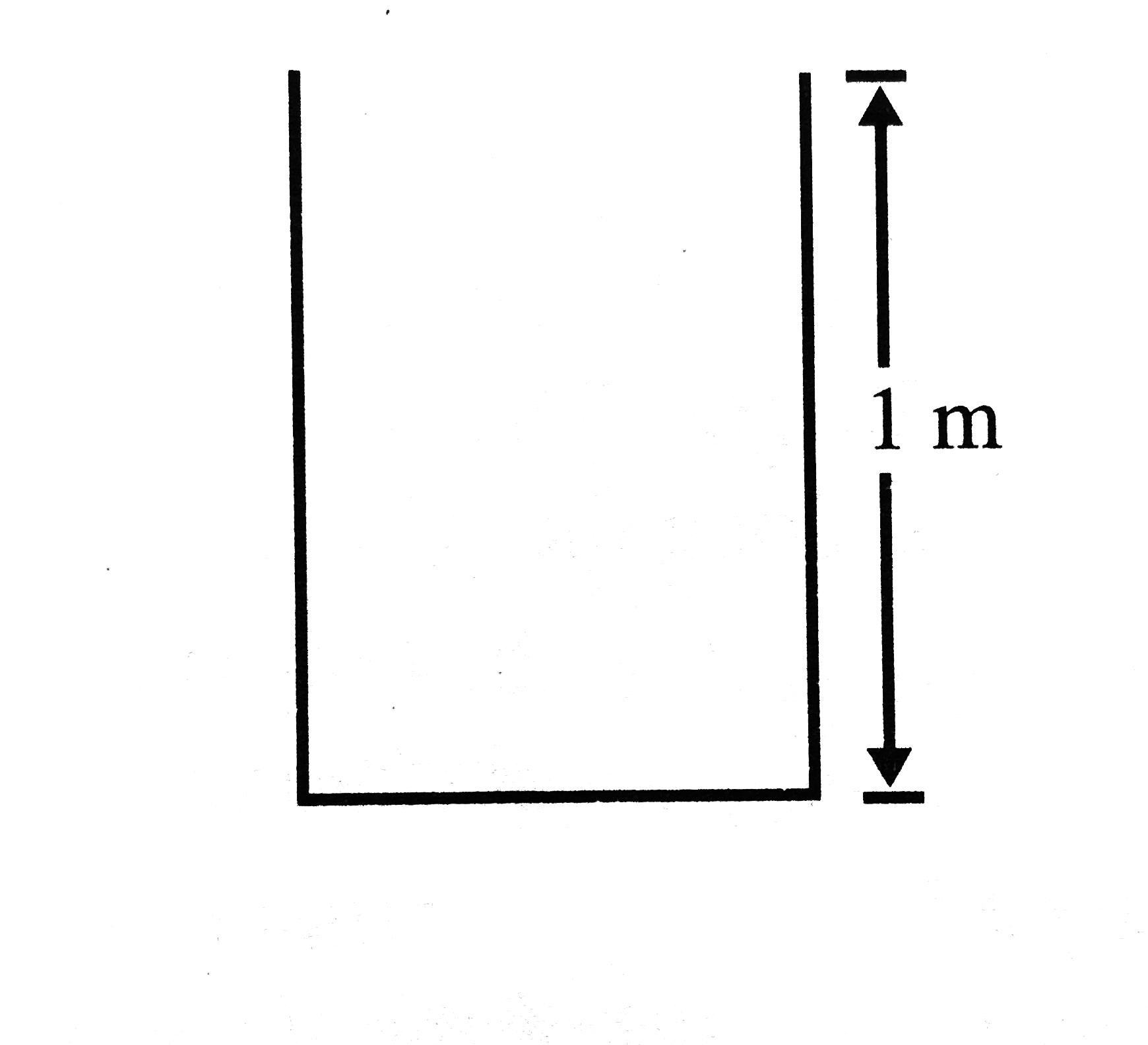The maximum variation in pressure P that the ear can tolerate in Ioud sound is about 28N/m2. What is the corresponding maximum displacement for a sound of frequency 500Hz imart? Density of air is 1.22kg/m3 and velocity of sound =330m/s.
To solve the problem, we need to find the maximum displacement (A) corresponding to the maximum variation in pressure (P) for a sound wave of frequency (f) 500 Hz. We will use the relationship between pressure amplitude, density, velocity of sound, and displacement amplitude.
1. Identify Given Values:
- Maximum pressure variation (P) = 28 N/m²
- Frequency (f) = 500 Hz
- Density of air (ρ) = 1.22 kg/m³
- Velocity of sound (v) = 330 m/s
2. Calculate the Bulk Modulus (E):
The bulk modulus (E) can be calculated using the formula:
E=v2⋅ρ
Substituting the values:
E=(330m/s)2⋅(1.22kg/m3)
E=108900⋅1.22=132286.8N/m2
3. Calculate the Wavelength (λ):
The wavelength (λ) can be calculated using the formula:
λ=vf
Substituting the values:
λ=330m/s500Hz=0.66m
4. Calculate the Maximum Displacement (A):
The relationship between pressure amplitude (P), density (ρ), velocity (v), and displacement amplitude (A) is given by:
P=2πρvA
Rearranging this formula to solve for A:
A=P2πρv
Substituting the values:
A=28N/m22π(1.22kg/m3)(330m/s)
A=282π⋅1.22⋅330
Calculating the denominator:
2π⋅1.22⋅330≈2547.4
Now calculating A:
A≈282547.4≈0.000011
A≈2.2×10−5m
Final Answer:
The maximum displacement (A) corresponding to the maximum variation in pressure is approximately 2.2×10−5m.
- Maximum pressure variation (P) = 28 N/m²
- Frequency (f) = 500 Hz
- Density of air (ρ) = 1.22 kg/m³
- Velocity of sound (v) = 330 m/s
The bulk modulus (E) can be calculated using the formula:
E=v2⋅ρ
Substituting the values:
E=(330m/s)2⋅(1.22kg/m3)
E=108900⋅1.22=132286.8N/m2
The wavelength (λ) can be calculated using the formula:
λ=vf
Substituting the values:
λ=330m/s500Hz=0.66m
The relationship between pressure amplitude (P), density (ρ), velocity (v), and displacement amplitude (A) is given by:
P=2πρvA
Rearranging this formula to solve for A:
A=P2πρv
Substituting the values:
A=28N/m22π(1.22kg/m3)(330m/s)
A=282π⋅1.22⋅330
Calculating the denominator:
2π⋅1.22⋅330≈2547.4
Now calculating A:
A≈282547.4≈0.000011
A≈2.2×10−5m
The maximum displacement (A) corresponding to the maximum variation in pressure is approximately 2.2×10−5m.
Topper's Solved these Questions
Similar Questions
the maximum pressure variation that the human ear can tolerate in loud sound is about 30N/m2 . The corresponding maximum displacement for a sound wave ina air having a frequency of 103Hzis
take velocity of sound in air as 300 m/s and density of air 1.5kg/m3
View SolutionThe faintest sound the human ear can detect at a frequency of 1kHz (for which the ear is most sensitive) corresponds to an intensity of about 10−12W/m2 (the so called threshold of hearing). Determine the pressure amplitude and maximum displacement associated with this sound assuming the density of air = 1.3kg/m2 and velocity of sound in air = 332 m/s
View SolutionA typical loud sound wave with a frequency of 1KhZ has a pressure amplitude of about 10 Pa
(a) At t=0, the pressure is a maximum at some point X1. What is the displacement at that point at t=0?
(b) What is the maximum value of the displacement at any time and place/ Take the density of air to be 1.29kg/m3 and speed of sound in air is 340m/s.
View SolutionThe faintest sound that can be heard has a pressure ampulitude of about 2×10−5N/m2 and the loudest that can be heard without pain has a pressure ampulited of about 28N/m2. Dentermine in each (a) the intensity of the sound both in w/m2 and in dB and (b) the ampulited of the oscillations if the frequency is 500HZ. Assume an air density of 1.29kg/m3 and a velocity of sound is 345m/s.
View SolutionPlane harmonic waves of frequency 500 Hz are produced in air with displacement amplitude of 10μm. Given that density of air is 1.29kgm3 and speed of sound in air is 340ms. Then
View SolutionFind the number of vibrations made by a tuning fork of frequency 480Hz during the time the sound travels a distance 220m. Velocity of sound =330ms−1.
View SolutionVelocity of sound in air is 320m/s. The resonant pipe shown in Fig. 7.81 cannot vibrate with a sound of frequency .

View SolutionThe faintest sound the human ear can detect at a frequency of kHz (for which ear is most sensitive) corresponds to an intensity of about 10−12w/m2. Assuming the density of air ≅1.5kg/m3 and velocity of sound in air ≅300m/s, the pressure amplitude and displacement amplitude of the sound will be rspectively ____N/m2 and ____m.
View SolutionDistance travelled by the sound produced by a tuning fork of frequency 50 Hz completing 200 vibrations is, (the velocity of sound in air is 330 m/s)
View SolutionHow many degress of freedom have the gas molecules, if under standard conditions the gas density is ρ=1.3kg/m3 and velocity of sound propagation o it is v=330m/s ?
View Solution
